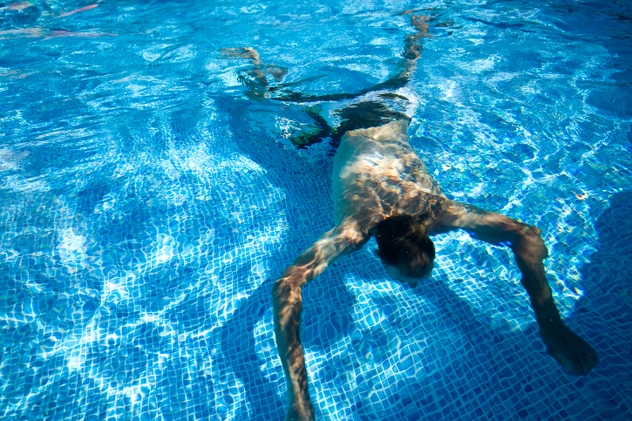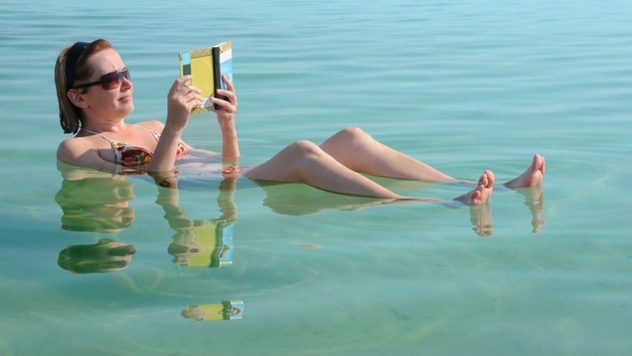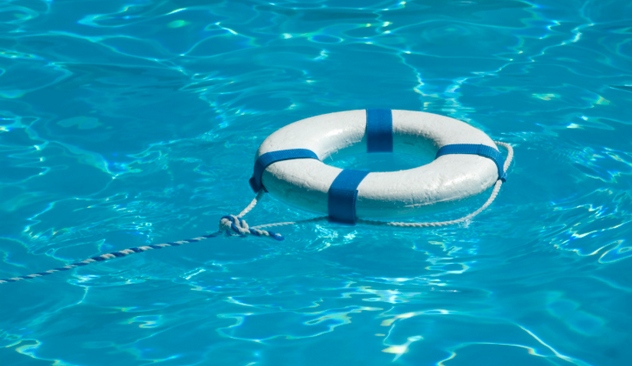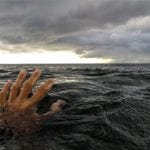 History
History  History
History  Weird Stuff
Weird Stuff 10 Everyday Products Surprisingly Made by Inmates
 Movies and TV
Movies and TV 10 Actors Dragged out of Retirement for One Key Role
 Creepy
Creepy 10 Lesser-Known Shapeshifter Legends from Around the World
 Animals
Animals 10 Amazing Animal Tales from the Ancient World
 Gaming
Gaming 10 Game Characters Everyone Hated Playing
 Books
Books 10 Famous Writers Who Were Hypocritical
 Humans
Humans 10 of the World’s Toughest Puzzles Solved in Record Time
 Mysteries
Mysteries 10 Scientific Mysteries We Don’t Fully Understand
 Weird Stuff
Weird Stuff 10 Celebrities Who Have Admitted to Alien Encounters
 History
History Ten Revealing Facts about Daily Domestic Life in the Old West
 Weird Stuff
Weird Stuff 10 Everyday Products Surprisingly Made by Inmates
 Movies and TV
Movies and TV 10 Actors Dragged out of Retirement for One Key Role
Who's Behind Listverse?

Jamie Frater
Head Editor
Jamie founded Listverse due to an insatiable desire to share fascinating, obscure, and bizarre facts. He has been a guest speaker on numerous national radio and television stations and is a five time published author.
More About Us Creepy
Creepy 10 Lesser-Known Shapeshifter Legends from Around the World
 Animals
Animals 10 Amazing Animal Tales from the Ancient World
 Gaming
Gaming 10 Game Characters Everyone Hated Playing
 Books
Books 10 Famous Writers Who Were Hypocritical
 Humans
Humans 10 of the World’s Toughest Puzzles Solved in Record Time
 Mysteries
Mysteries 10 Scientific Mysteries We Don’t Fully Understand
 Weird Stuff
Weird Stuff 10 Celebrities Who Have Admitted to Alien Encounters
10 Disturbing Facts About Drowning
It is one of our most visceral fears; thrashing in the deep, far below the water’s surface, lungs burning for oxygen. Drowning claims hundreds of thousands of lives every year, a great many of whom are young children. Of course, exposure to water is a key factor in drownings, but there is a strong economic correlation as well. Those in poorer countries are far more likely to drown. In Bangladesh, 17,000 children drown annually—that’s 46 a day.
Below are 10 facts about drowning; from a lake that never surrenders its victims to a party for lifeguards that ended in deadly irony.
10The Lake Where Drowning Victims Are Never Found

Tucked in the Sierra Nevada mountains between California and Nevada, Lake Tahoe is a popular vacation destination with a chilling secret. The lake itself is massive and deep, descending 501 meters (1,645 ft). During the summer months, it is a haven for swimmers, boaters, and water skiers. What these fun seekers fail to realize is that they have a graveyard beneath them.
Anyone who has watched a crime show is familiar with the term “floaters”—corpses found bobbing on the surface of the water. In a traditional drowning, the victim becomes submerged and dies, the lungs filling with water. Soon thereafter, bacterial activity inside the corpse causes a buildup of gases, and the body floats to the top like a cork. Lake Tahoe is so cold that it inhibits the bacteria, and bodies rarely rise to the surface. Because of the lake’s elevation—1.9 kilometers (6,225 ft) above sea level—divers cannot descend as deep as they typically could in other bodies of water, and the missing are often never found.
In 2011, some “mixed gas” divers, whose specialized equipment allows them to go down some 107 meters (350 ft), discovered the body of Donald Windecker, who’d been missing since 1995. Windecker was found in cold water—1.7 degrees Celsius (35 °F)—at 81 meters (265 ft). The body was in remarkably good condition. The frigid depths preserved the body and did not allow bacteria to flourish. There is no telling how many thousands more corpses lie on the floor of Lake Tahoe, perpetually left to their last summer vacation.
Investigate the bizarre prehistoric animals that drowned millions of years ago with The Lost World of Fossil Lake: Snapshots from Deep Time at Amazon.com!
9Fresh Water And Salt Water Drown You Differently

At first glance, it would appear that swimming in the ocean is far more dangerous than swimming in a lake. Crashing waves and riptides can easily sweep beachgoers to their doom. But shockingly enough, about 90 percent of drowning cases occur in freshwater. The reason involves a bit of chemistry. Fresh water is more similar in composition to our own blood than salt water. When it is inhaled into the lungs, it passes into the bloodstream through osmosis. When the blood is so radically diluted, cells burst, leading to organ failure. The entire process takes two to three minutes.
Ocean water contains far more salt than human blood. When it is aspirated, the body attempts to regulate itself by transferring water into the lungs, thickening the blood. It takes considerably longer to kill a person, between 8 to 10 minutes, allowing a much greater chance of rescue.
8Delayed Drowning
In 2008, 10-year-old Johnny Jackson was playing in a neighborhood pool in Goose Creek, South Carolina, under the watchful gaze of his mother. Johnny, who had autism and ADD, was wearing swimmies on his arms but still managed to apparently “drink” a little water. He sputtered and coughed, then appeared to return to normal—nothing that doesn’t happen every time the average child goes swimming. Afterward, he didn’t seem to exhibit any trouble breathing, though he did uncharacteristically soil himself. When he returned home, his mother gave him a bath and he went to bed.
She went to check on him minutes later, only to find him foaming at the mouth, his lips blue. Johnny died of cardiac arrest en route to the hospital. He had inhaled a sufficient amount of water to slowly drain the oxygen from his body and kill him, a rare condition known as “delayed drowning.” His grief-stricken mother Cassandra reported, “I’ve never known a child could walk around, talk, speak and their lungs be filled with water.” While this could happen to anyone, children are the most susceptible. Pediatricians advise that if your kids show any of the following symptoms after swimming—problems breathing, exhaustion, or odd behavior—you should seek immediate medical attention.
7The Dead Sea

So named because its salinity leaves its waters practically devoid of life, the Dead Sea is located between Israel and Jordan and is popular with tourists. The myth goes that since the water is so salty (three times more so than Utah’s Great Salt Lake), it is too dense for a person to drown. It is true that it is nigh impossible to drown in the conventional fashion—that is, becoming fully submerged beneath the water.
A human body is buoyed by the Dead Sea, and it is difficult to touch the bottom with your feet; should you become turned over on your face, however, it can be hard to right yourself. Even a few swallows of the water, dense with salt and minerals, is toxic to the body and disrupting to the electrolyte balance. Those who are rescued from the sea before dying face a tough recovery, suffering internal burns and chemical pneumonia. In the most severe cases, dialysis may be required.
A lungful of it may be deadly, but the salt from the Dead Sea is packed with invigorating minerals. Exfoliate naturally with a Dead Sea Salt Scrub with Coconut Oil at Amazon.com!
6Execution

Drowning has been used as a means of execution for millennia. Surprisingly, it was traditionally considered a rather “genteel” method of capital punishment, typically reserved for women or men of privilege. Most countries outlawed the practice during the 17th century, but it saw an ugly resurgence during two key time periods—the witch trials and the French Revolution.
In Salem and elsewhere, the process of determining whether one was a witch could be quite brutal. One tried-and-true method was weighting someone down and tossing them into water. This was a catch-22 situation, if there ever was one—a human was supposed to sink beneath the surface and drown, whereas a witch, utilizing black magic, would float and be subjected to lethal justice.
During the French Revolution, so many people were killed that novel methods had to be devised to take them out en masse. The guillotine was marvelously efficient, but could only serve one person at a time. The period between November 1873 and February 1874 was particularly grim, dubbed the “Reign of Terror.” On the orders of Revolutionary Jean-Baptiste Carrier, thousands of people in Nantes, France were killed on suspicion of being loyal to the crown. Members of the clergy were specifically targeted—stripped, loaded onto barges, and drowned in a river Carrier called “the national bathtub.”
5Drowning Looks Different In Real Life Than In The Movies
In movies and television, a drowning scene is stereotypical—the victim will thrash about, desperately clinging to the last vestiges of life. However, real life is a lot different from Baywatch. When people find themselves on the cusp of drowning, they enter a state of preservation called the “Instinctive Drowning Response.” Voluntarily movement becomes impossible; the person tends to bob listlessly, head thrown back, mouth level with the water. The eyes may be glassy or altogether closed. The legs do not kick, and the arms are held laterally against the body. The body is held vertically.
The Instinctive Drowning Response is so undramatic that people often succumb even with lifeguards and other swimmers around. Experts recommend keeping a close eye on swimmers, and if someone becomes still to question them and make sure they remain cognizant. A drowning person will not be able to answer, or even reach for rescue equipment, and they have precious few seconds before they submerge.
4Mammalian Diving Reflex
At the outset, humans do not appear to have any particular adaptations for survival in the water. We’re relatively poor swimmers when compared to other animals. However, humans are blessed with an evolutionary adaptation that allows aquatic animals like whales and seals to stay submerged for an extended time: the mammalian diving reflex. When a human’s face touches water, a series of involuntary physiological responses begin, designed to keep the body alive. The airway closes, the heart rate slows, and the capillaries in the skin and extremities constrict, sending blood toward the vital organs. This serves a dual purpose: keeping the organs oxygenated and insulated from increasing water pressure. Unfortunately, it also saps strength from the limbs for swimming.
This reflex is most frequently seen in drowning children. They actually have a better chance of recovery than adults. The colder the water, the better, as it slows the metabolism and allows the body to enter a protective state much like hibernation. Due to this reflex, the bodies of children who have been submerged for many minutes have been resuscitated with no neurological damage.
3Animals That Drown
Animals are often far more clever than we tend to give them credit for, utilizing all aspects of their environment to their advantage. Raccoons, with their bandit masks, are adorable creatures, if a bit of a nuisance. They aren’t particularly dangerous, but can be savage fighters if cornered. Most of these confrontations happen with domestic dogs, some breeds of which are plenty large and determined enough to kill a raccoon. But the raccoon has a trick up its sleeve. When near a body of water, the clever little creature will swim out. When the dog invariably follows, the raccoon will dunk the dog’s head under the water, attempting to drown it.
In Australia, kangaroos will use a similar tactic to defend themselves from attacking dingoes. Otters are particularly diabolical. They breed furiously in the water, and the female is occasionally drowned during congress. The males will also attack young harbor seals, raping and killing them. In a chilling video, a group of otters attack and drown a taunting monkey at the Bronx Zoo.
2Minorities Drown Far More Frequently
Many types of accidents claim lives indiscriminately, but drowning affects some very specific demographics. In the United States, approximately 80 percent of drowning victims are male. This is not due to any kind of physiological difference, but because men are more likely to drink and engage in risky behavior around water.
For minorities, the news is even worse. According to the CDC, African-American children are particularly at risk. African-American kids between 5 and 14 years old die from drowning nearly three times as often as whites of the same age. The most pronounced statistic occurs in children between 11 and 12 in swimming pools—African Americans are 10 times more likely to drown than whites in this scenario. Again, this is not due to any kind of physical difference between blacks and whites but exposure to water. The majority of African Americans live in urban centers, where they are less likely to encounter pools or learn to swim.
1Irony

Nowhere would you imagine yourself safer from the danger of drowning than at a party held for lifeguards. But at a 1985 bash in New Orleans, Louisiana, drowning is precisely what happened. The party was being held to celebrate a summer where no one had drowned at any of the city’s pools.
There were some 200 people in attendance, over half of which were certified lifeguards. A further four lifeguards were on active duty when 31-year-old Jerome Moody died. Exactly when he went under was unclear; his fully clothed body was retrieved from the deep end of the pool after the party began wrapping up and guests exited the pool. Resuscitation efforts were unsuccessful. Moody’s autopsy confirmed death by drowning. Not surprisingly, this twist of irony was quite traumatizing, with New Orleans Recreational Department Director stating, “The lifeguards were really upset. It’s a real tragedy. This was the first annual party in memory where they could celebrate a trouble-free season.”
Mike Devlin is an aspiring novelist.





![11 Lesser-Known Facts About Mass Murderer Jim Jones [Disturbing Content] 11 Lesser-Known Facts About Mass Murderer Jim Jones [Disturbing Content]](https://listverse.com/wp-content/uploads/2020/09/jonestown2-copy-150x150.jpg)

![9 Sinister Facts About The Dark Side Of Instagram [WARNING: Disturbing] 9 Sinister Facts About The Dark Side Of Instagram [WARNING: Disturbing]](https://listverse.com/wp-content/uploads/2019/10/proxy.duckduckgo-150x150.jpg)
